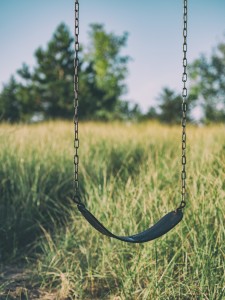Developing gratitude can be very powerful for brightening spells of depression, and for making the good times even sweeter. In reality, it’s one of the key inner qualities a person can develop if they are interested in happiness.
In today’s post, I’ll share a way I think about different types of gratitude, and practices I do to cultivate each one. Here’s the three types:
 1. Past Happenings
1. Past Happenings
As the name suggests, these refer to tangible experiences that have already happened. They could be experiences from long-ago, like the vacation spot we went to as a child, or things more recent, like the vacation we took last month.
Although, one important principle to know is that proximity is power.
In other words, the most powerful past-happening-gratitudes are usually the ones that have occurred more recently. In turn, here’s a fairly common daily practice that I’ve found extremely beneficial:
During a meal, at the end of the day, or if I happen to be with a receptive friend, I explore this question:
“What are three things that have happened so far today for which I am grateful?”
These three things could be as simple as having had lunch with a friend, felt the afternoon sunshine or cooked a meal. They could also be more elaborate, like, “I’m so grateful for having lunch with Joe, and how he listened to me so deeply and compassionately, and reminded me what friendship is all about.”
While it can be powerful to do it by yourself, in thoughts or in writing, I’ve generally found it to be significantly more uplifting if I can share it with someone else, even if just over email.
 2. Present Happenings
2. Present Happenings
Present-happening-gratitudes are pretty straightforward. We notice them when we drop out of our stories of past and future, and bring our attention to the here-and-now.
My favorite way to practice these are on a gratitude walk. I often walk for 10-30 minutes around my neighborhood with the intention of verbalizing present happenings that I’m grateful for:
- The color of the night sky
- The tingling touch of the air on my skin
- The gently swaying Douglas fir trees
- The deliciousness of the in-breath
- These ears that hear the medley of urban sounds
- This bladder that is such an effective communicator of important messages!
- I’m grateful to be alive in springtime
- These shoes that protect my feet from the cold
I find it helpful to actually speak my gratitudes out-loud, even if that’s just a whisper.
However, the verbalizing isn’t the key point. What’s key is actually getting a felt sense for the particular appreciation. Feeling it in your body and heart-space. So while the words aren’t necessary, most people find that they help us get to that feeling-space.
Another way to practice present-happening-gratitude is through mindfulness meditation. Often times, when people practice mindfulness meditation, they focus on the breath, a mantra or some body sensation with an attitude of equanimity. They train themselves to not react to their thoughts and emotions, and stay rooted in presence.
An alternative method is to have the attitude of gratitude be front-and-center.
For example, if you’re doing breath meditation, this could mean conjuring gratitude for every in and out breath, or feeling grateful for every distraction, every loud sound, every aimless thought and anything else you observe. Seeing everything that happens, even the painful stuff, as another gift of life.
Alternatively, if you’re doing a body scan, you could move your attention through the body, feeling gratitude for every part.
 3. Deep Gratitudes
3. Deep Gratitudes
These gratitudes usually come from a more reflective space. They are not things we just notice on the side of road. One powerful entryway is contemplative questions, like
- when I take stock of my life right now, what are the things I’m most grateful for?
- what the is the single thing that I most appreciate about my best friend/job/mother/life situation/etc.?
- if I were to write a love letter to life, what would the main things I talk about be?
The specific questions aren’t nearly as important as how deeply you engage with the questions. They are based explored when you are feeling somewhat spacious and relaxed, like at the end of sitting meditation, or when you have a few minutes to reflect over a cup of coffee/tea. I also find they are really powerful to do with someone else. Imagine having a meal with a friend, and asking, “what are you most grateful for in this life? Don’t answer right away. Take a moment to think about it.”
While the specific questions aren’t important, I find that the more deeply you engage with the question, the more specifics are found in your answer.
Sure, your biggest gratitude might be your partner, but what specifically about them? Maybe you feel generally grateful to be alive, but what specifically?
 4. Bonus Interpersonal Practice
4. Bonus Interpersonal Practice
Here’s one of my favorite interpersonal games that involves two people. They begin by sitting across from each other, making eye contact.
Person A says, “B, tell me what you love”
Person B responds, “I love watching the sunset over the river..”
Person A says, “thank you.”
Person B says, “A, tell me what you love”
Person A says, “I love being with my brother”
Person B says, “thank you.”
Person A says, “B, tell my what you love”
And it repeats like this for 2-10 minutes.
Conclusion
The main thing I would love to get across today is that gratitude is something to be developed. It’s both an attitude and a habit of mind. The more we do these sorts of practices, the more they become our natural habit.
From there, our life slowly gets infused with increased gratitude and joy.
Which of these practices would you be most drawn to doing every day?
